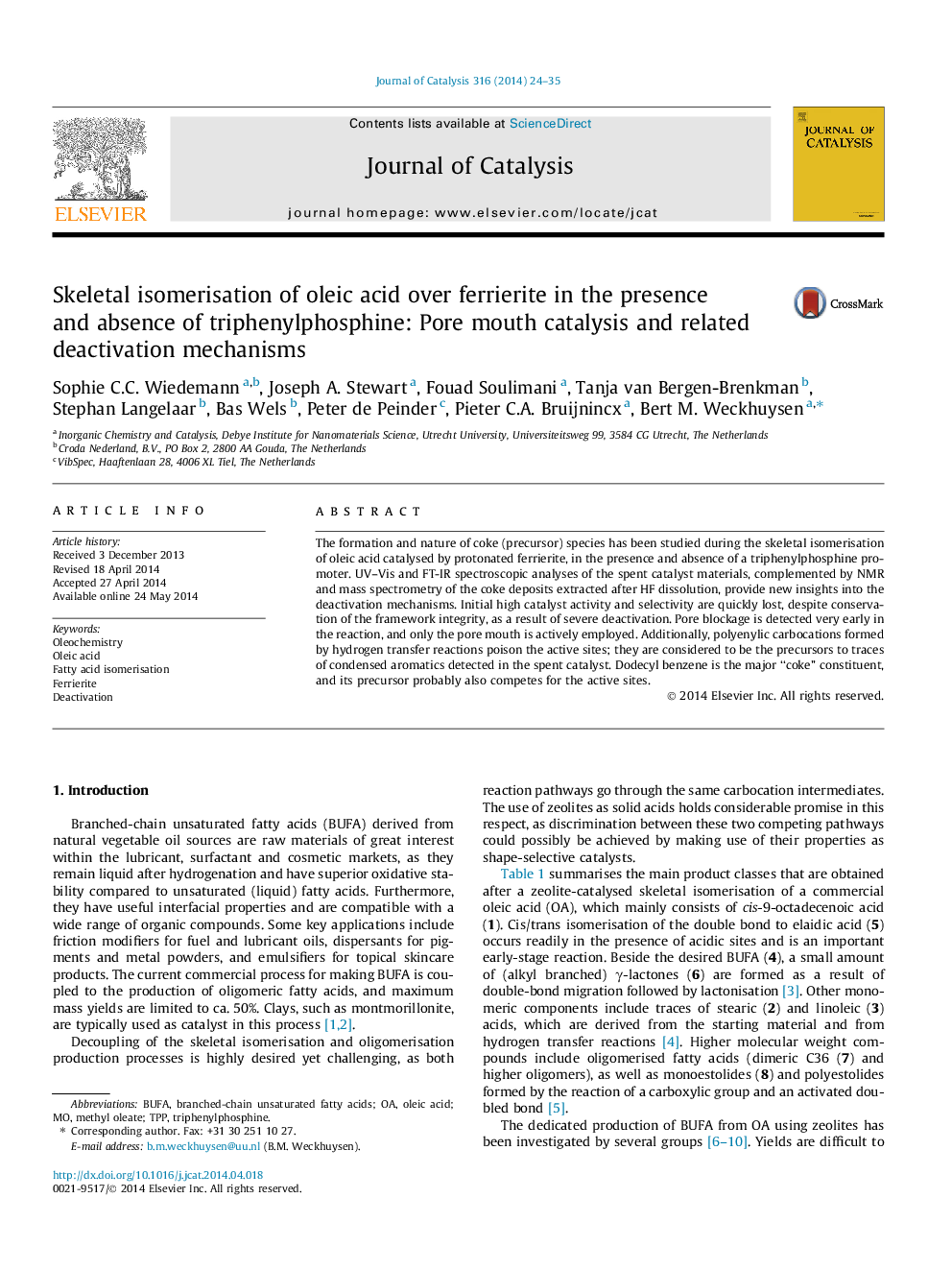| Article ID | Journal | Published Year | Pages | File Type |
|---|---|---|---|---|
| 60960 | Journal of Catalysis | 2014 | 12 Pages |
•Ferrierite catalyses the alkyl branching of oleic acid with high activity and selectivity.•Reuse experiments indicate severe deactivation, despite framework conservation.•Micropore blockage occurs early on in the reaction, suggesting the existence of pore mouth catalysis.•The acid sites are poisoned by the formation of (poly)enylic carbocations.•Long chain alkyl benzenes are found to be the major coke constituents.
The formation and nature of coke (precursor) species has been studied during the skeletal isomerisation of oleic acid catalysed by protonated ferrierite, in the presence and absence of a triphenylphosphine promoter. UV–Vis and FT-IR spectroscopic analyses of the spent catalyst materials, complemented by NMR and mass spectrometry of the coke deposits extracted after HF dissolution, provide new insights into the deactivation mechanisms. Initial high catalyst activity and selectivity are quickly lost, despite conservation of the framework integrity, as a result of severe deactivation. Pore blockage is detected very early in the reaction, and only the pore mouth is actively employed. Additionally, polyenylic carbocations formed by hydrogen transfer reactions poison the active sites; they are considered to be the precursors to traces of condensed aromatics detected in the spent catalyst. Dodecyl benzene is the major “coke” constituent, and its precursor probably also competes for the active sites.
Graphical abstractFigure optionsDownload full-size imageDownload high-quality image (87 K)Download as PowerPoint slide
